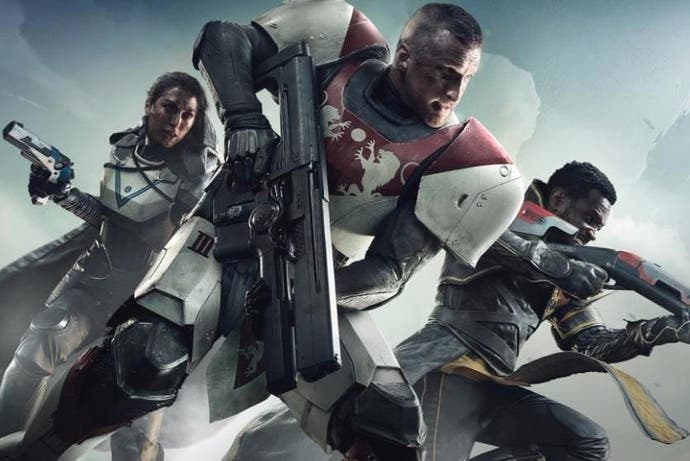Destiny 2 guide, story walkthrough: Everything you need to know about activities and progression
Activities explained, getting started whether Destiny veteran or new player, and a walkthrough of story progression.
Destiny 2 is set to be one of the biggest games of the year, building on the ideas and universe established in Bungie's online console shooter that debuted back in 2014.
Returning to both PS4 and Xbox One - and making its series debut on PC - the full sequel ushers in new planets to explore and shoot aliens on, new co-operative Strikes to tackle and hopefully lots of story to devour.
Our Destiny 2 guide will explain what we know so far about weapons, classes and progression, and in the coming days, how to tackle each planet's many activities and their many mysterious new consumables and collectibles, and next week, how to beat the new Raid.
As well as several Destiny 2 guide suggestions, we'll also give things to keep in mind while playing - whether you're just starting out or looking to tackling those high-end activities to the level cap. Best of luck, Guardians!
Destiny 2 guide list
The following is a list of key explainers for core concepts and things you want to know as you play through the game, including a tease of how to unlock the game's many exotics and how the end-game content works.
Progression:
- Destiny 2 classes and subclasses - new Titan, Hunter, and Warlock skills explained
- Destiny 2 Power level explained: How to reach Power level 265 and max level cap
Planets:
- Destiny 2 EDZ Challenges and Activities, including Dusklight Shards
- Destiny 2 Titan Challenges and Activities, including Alkane Dust
- Destiny 2 Nessus Challenges and Activities, including Datalattice
- Destiny 2 Io Challenges and Activities, including Phaseglass
Activities:
- Destiny 2 Heroic Public Events - triggers plus the best planet for Public Events
- Destiny 2 Adventures - how complete Adventures around the galaxy
- Destiny 2 Lost Sectors - locations for the mini-dungeons
- Destiny 2 Flashpoints explained - how to unlock Flashpoints and earn Flashpoint rewards
- Destiny 2 region chest locations
- Destiny 2 Treasure Map locations - Where to find all five Cayde-6 treasure maps
- Destiny 2 Strikes explained - how to unlock Strikes and earn rewards
- Destiny 2 Crucible tips - maps, modes, strategies in Destiny 2's PvP explained
Gear and transport:
- Destiny 2 Sparrows: How to get a Sparrow in Destiny 2
- Destiny 2 PS4 exclusive content - PlayStation 4's exclusive items detailed
- Destiny 2 Bright Dust, Ornaments and Bright Engrams explained
Materials and consumables:
- Destiny 2 Glimmer: What to spend Glimmer on and how to earn it
- Destiny 2 Legendary Shards - How to get and use the valuable resource
- Destiny 2 Mods, Infusion and when to decrypt Engrams
- Destiny 2 Dance Party Key and Loot-a-Palooza Keys explained
Factions and systems:
- Destiny 2 weekly reset - what time and what happens with each reset?
- Destiny 2 Clans - how to join a Clan, how to earn Clan XP
- Destiny 2 Faction Rally explained: Which Faction is best to choose from
End-game activities:
- Destiny 2 Leviathan raid guide and walkthrough
- Destiny 2 Prestige raid changes, differences and rewards
- Destiny 2 Iron Banner - Gear, armour and weapons explained
- Destiny 2 Nightfall explained - how to unlock Nightfalls, Nightfall schedule
- Destiny 2 Trials of the Nine and Trials loot explained
- Destiny 2 The Farm secrets: Sentry Ranks, Commander Blessing and more
- Destiny 2 Tower secrets: Floor is Lava, Tower Ball and Tower secret room
Exotics and gear:
- Destiny 2 Exotics list - Every Exotic weapon and Exotic armour we know about so far
- Destiny 2 Mida Multi-Tool quest and Mida Mini-Tool explained
- Destiny 2 Rat King quest riddle solutions - how to get the Rat King
- Destiny 2 Sturm and Drang quest: How to complete every Relics of the Golden Age quest
- Destiny 2 World-Eater quest: On the Comms quest and unlock the Legend of Acrius
- Destiny 2 Masterworks: Weapons, armour, perks, Masterwork Cores
Destiny 2 DLC Curse of Osiris
- Destiny 2 DLC Curse of Osiris guide and walkthrough
- Destiny 2 Mercury Heroic Public Event Vex Crossroads
- Destiny 2 Lighthouse secret chest solution
- Destiny 2 Lost Prophecy Verses
- Destiny 2 Eater of Worlds Raid Lair
Everything else about Destiny 2:
- Destiny 2 PC specs, graphics options, Battle.net accounts and everything else we know
- Destiny 2 error codes plus other currently known issues
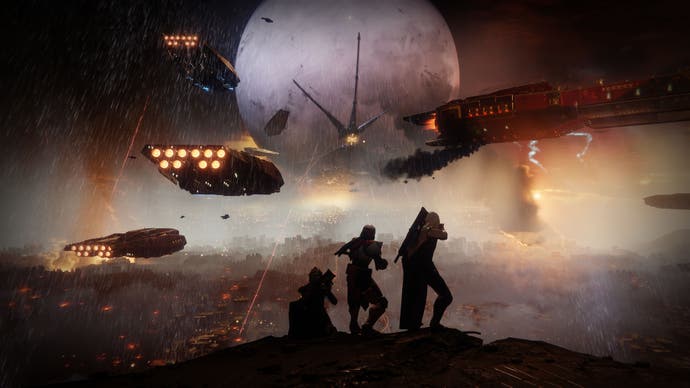
Destiny 2 story walkthrough and how activities work
There are lot of areas, terms and modes in Destiny 2 that will confuse you at first, but if it's anything like the original, once you settle in they should become second nature.
Similar to the first game, there are story missions that will take you to four planets in sequence. Visiting each planet will, at a certain point, unlock these planets to explore in Patrol mode. This mode allows you to explore the planet freely, with additional activities to find, more enemies to shoot, and consumable items to collect.
If you get stuck for what to do next, simply play the next story mission (on the Destination screen, hold L2 to bring up the next Story milestone). If it's not clear, here is our in-progress story progression list so you know what planet and activities are unlocked when:
The Tower and unlocking EDZ:
- Homecoming, Exodus missions unlock The Farm social space
- The Farm's first visit unlocks the Director and Milestones
- Chat to Hawthorn for Spark, unlock first sub-class and Super
- Unlock the EDZ Patrol space from Hawthorn, as well as The Crucible Milestone from Lord Shaxx at The Farm
EDZ and Titan
- Visit Devrim Kay in the EDZ, undergo A New Frontier Adventure and first Lost Sector dungeon
- Complete Combusion, Hope story missions in EDZ (Power level 30 recommended)
- Complete Hope and Riptide on Titan (Power level 50 recommended)
- Titan Patrol Space unlocked, chat to Sloane to unlock Utopia
- Complete Utopia on Titan (Power level 60 recommended)
Nessus and Io
- Complete Looped on Nessus (Level 7 required, Power level 80 recommended)
- Complete Six on Nessus (Power level 80 recommended)
- Complete Sacrilege on Io (Level 11 required, Power level 120 recommended)
- Complete Fury on Io (Power level 120 recommended)
The road to the end-game
- Head to the Farm, watch the cutscene, speak to Hawthrone to unlock the following Milestones and activities: Strikes, Challenges, Patrols
- Complete Payback on EDZ (Level 15 required, Power level 160 recommended)
- Complete Unbroken on EDZ (Power level 160 recommended)
- Complete Larceny on EDZ (Power level 170 recommended)
- Complete 1AU (Power level 170 recommended)
- Complete final mission Chosen (Power level 180 recommended)
Post-game activities
- Visit social space for a number of rewards; Hawthorne (Fireteam Medallion consumable reward), Ikora (Last City Shell reward), Cayde-6 (Quickfang Legendary Sword), Amanda Holliday (140 speed Common Sparrow) Commander Zavala (Exotic Engram)
- If you have pre-ordered the game, collect the Coldheart Exotic weapon from Gunsmith Banshee
- Once you have reached level 20, collect your three free Bright Engrams from Eververse vender Tess Everis
- Additional story questlines now available on all four planets, many ending in Exotic weapon quests
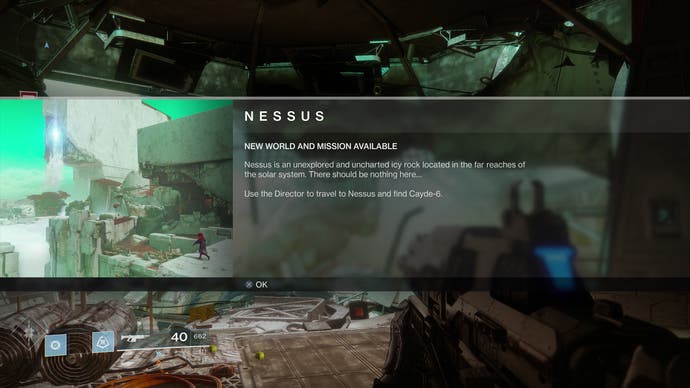
Story missions themselves are straightforward that specific walkthroughs aren't really needed, but if you get stuck, remember the following:
- Try and play each one close to the recommended Power level. If you find it too challenging, then try playing some Patrol activities instead to get new gear and raise your level.
- If you get lost or don't know where to go, bring up your Ghost to show an on-screen direction marker. Otherwise, look above and below you for ledges that you can reach.
- If there is an obstacle in your way and it's the way the marker tells you to go or to interact with, then try shooting it. You'll do this several times on Titan, for example.
- Don't feel you have to fight every encounter. Some missions - such as most on Titan - have fights that you can sprint past and avoid entirely.
Though there is much more to do than just story missions, but if you're paralyzed by choice, it's the fastest and easiest way to level up with new gear and most importantly, get to new areas, higher Power levels and access end-game content.
That said, there might be times when it becomes too difficult to take on new missions due to your Level, in which case these side activities come in handy.
Activities to do beyond the main story
Patrol spaces - the first of which you unlock when you visit Devrim Kay in the EDZ, and the rest after completing a few story missions on their respective planets - are where you'll find some of the game's new activities, including:
- Adventures (mini story-missions)
- Lost Sectors (mini dungeons)
- Public Events (short objectives to complete with other players)
- Patrol Missions (unlocked later in the story)
- Region Chests (once-off chests to find while exploring
Each planet's Patrol space will open up as you play the story missions - with maps to help guide you, plus additional landing zones to save time travelling.
Once the story is done, you're far from over - you can mop up more story missions and the above activities, some of which we suspect will be gated by your Guardian's level.
There is of course The Crucible, which is also a great way to get loot.
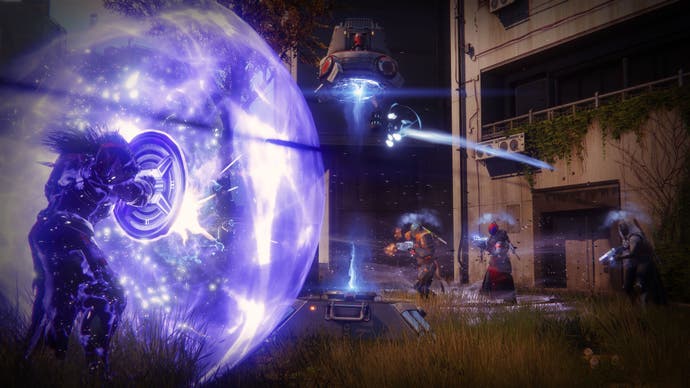
Then there's the end-game, which is where you can finally pay attention to things like Faction rewards. In short, the higher your level, the more activities there are available to you, from harder Strikes (three-player missions, designed to be replayable) the weekly Nightfall (an extra-hard Strike that changed each week, with unique rewards) and, if you can get a team together from when it releases, the Raid (a lengthy, puzzle and combat-filled dungeon for six players) all of which will give you even better loot than before.
The core loop by the end is pushing to unlock these tougher challenges to get better loot, which in turn allows you to take on even tougher challenges.
Destiny 2 guide to everything else you need to know
There is a lot of systems and things to consider when playing Destiny beyond tackling missions, of which we can help explain, from booting up the game for the first time to getting deep into the end-game.
Starting fresh? Don't worry about class choice or race too much
If you haven't played Destiny before, or fancy starting over with one of the new rejigged classes, then as with most role-playing games the choice of what new character and race to choose from can be pretty stressful. While each character has their own sub-class, exclusive abilities and armour types, as with the original, no weapon or mission-type will be off limits by your choice.
As for race, it's something the first game barely acknowledged, and the same applies to the sequel - so go with what you prefer.
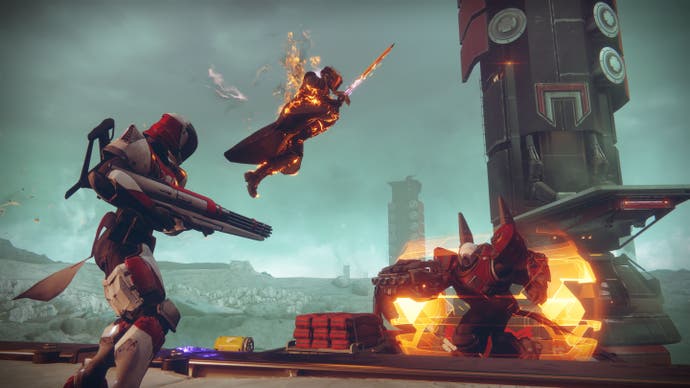
It's only when it comes down to end-game content such as the Raid where in very occasional situations some classes are more useful than others, but with only three classes available, it'll be easy to find a player with whatever class you need. So choose what most interests you, and get playing!
Loot won't carry over - but Destiny 1 characters can be imported
Gear, weapons, premium Eververse items and currency will not carry over from the first Destiny game, giving the sequel a clean slate to introduce new ideas. This has been explained briefly in the game's lore, with enemy faction the Cabal blowing up the Tower where it's stored. (Just don't tell Bungie items were also kept in two other social spaces.)
Characters who had completed the Black Garden story mission and have reached level 20 will have their race, class and appearance carry over from the first game. It's currently unknown when you can transfer characters from console to PC.

You will, however, unlock certain Emblems if you did play and complete certain activities from the first game. You can see these by visiting the Vault, then seeing your Collections, and can be equipped as soon as your arrival to The Farm.
You can play with friends throughout - or choose to go solo
Dispelling some pre-launch rumours, beyond the first mission you can join together with friends to tackle story missions, if you want to shoot the breeze while you shoot aliens:
Though Destiny is an online-only game, much of it can be played solo if you choose; story missions can easily be finished on your own, Patrol activities will have you encounter random players to help you complete them, while Strikes and Crucible matches feature matchmaking before they begin.
It's only end-game activities such as the Nightfall Strike and Raid that will require you to find a team, which is where Clans and Guided Games system comes in.
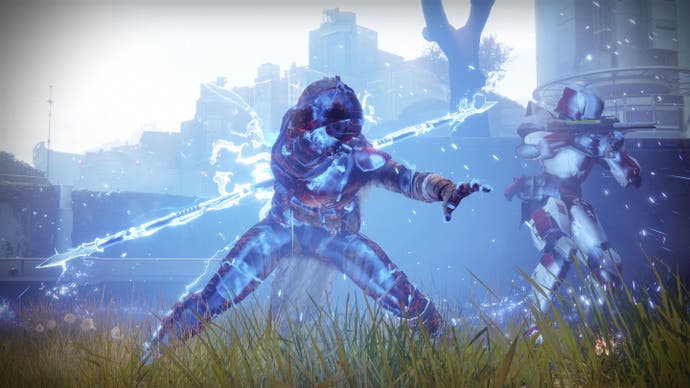
How weapon types and armour stats now work in Destiny 2
Essentially, what you need to know about weapons and armour is thus; no matter what class you choose, you can use any weapon in the game. Armour, however, is split into each of the three class types, benefiting their unique abilities with specific perks.
From there, things get a little more complicated. Firearms and melee weapons are once again organised into three different slots, with in a slightly amended way, now billed as Kinetic weapons, Energy weapons and Power weapons, with one of each equipped at any time.
Several of the same primary and second types - such as hand cannons and auto rifles - can be found in Kinetic and Energy form, though only elemental versions of these weapons can be in the Energy weapon slot.
These Energy weapons come in three types - Arc, Solar and Void, each with a respective Blue, Red and Purple colour. They are effective at taking down the matching colour shield of an enemy. It's an easy system to remember once you know it; if you come across a mini-boss with a purple shield, use a Void (purple) Energy weapon against it.
Power, meanwhile, is essentially Heavy weapons from the first game with a few of the secondaries thrown into the mix (such as Shotguns) as well as other new weapon types, such as the Grenade Launcher. These too have elements to help you take on certain bosses.
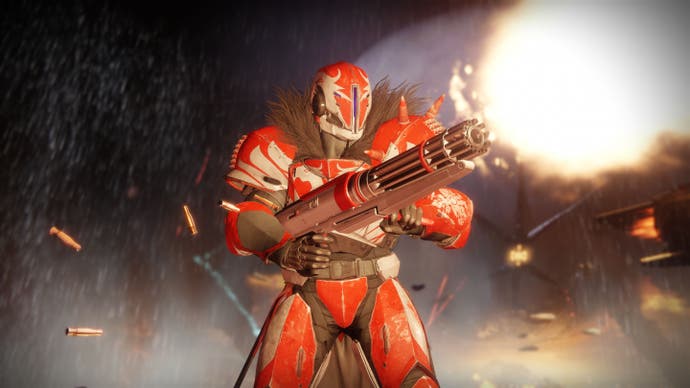
Exotics are back, too. As with the first game, expect these rare drops to have unique abilities you can't find anywhere else, and unlocking each one should give you plenty to do in the end-game. Our Exotics list explains how they work, what these weapons and armour types are and how to get them.
Elsewhere, stats on all armour have had a little change; Strength, Intellect, and Discipline are no more, and instead you have Armour, Recovery and Agility. These are essentially what sub-class nodes in the original game changed - increasing your speed or recovery in battle - allowing you to spec your character based on equipment.
The result of these stat changes, as well as changes to weapon classes, should be that of better balance in competitive and co-operative play.
Engram and loot rarity explained
As you play Destiny, you'll weapons and armour have different colour, and that orbs named 'Engrams' will drop. These will give you weapons upon collection (unlike the first game, you won't need to decrypt most of them) with some colours offering rarer and more powerful loot than others. In order, they are:
- White (very common)
- Green (common)
- Blue (uncommon)
- Purple (Legendary)
- Gold (Exotic)
The higher the rarity, the more powerful the weapon or armour inside is likely to be - though as returning Destiny fans will tell you, that's no guarantee.

Random weapon rolls are no more
Unlike the original game, every weapon you collect will have the same stats as any other of that type (so every Sunshot Exotic will be as powerful as the next you find), director Luke Smith told Mashable.
This means Bungie can balance weapons easier, but on the flipside, it gives players less incentive to keep collecting weapons to try and get the perfect editions of their favourites - something which Smith acknowledges as a potential problem it hopes to solve in the game one day.
You no longer have to have your best gear on when decrypting
A frustrating quirk of the original's levelling system meant you had to equip your best possible gear in order for new Engrams to dish out something comparable or higher. Thankfully, this has been amended for the sequel as the game will work it out for you - so no need to shuffle through your inventory every time you head to the Cryptarch.
Play to the game's schedule and come back every week
Take note of when the game updates every day and week in order to get the most out of the game. Every Tuesday morning UK time the servers will reset, refreshing major activities such as the Nightfall, Raid and Flashpoints and offering new rewards (of which, assuming it's like the first game, can only be collected once per reset).
It's also worth remembering when Xur is selling items each week, and is one of the easier way to get Exotics (explained below) and other valuable loot.
Destiny 2 guide: Everything you need to know about the sequel's many gameplay changes and additions
Whether you're returning from the first game or are completely new to the game, here's the broadstrokes of what's inside Destiny 2.
Story and characters
Destiny 2's story revolves around how Guardians will fight back against one of the game's returning enemy factions, the Cabal (specifically, the Red Legion faction headed up by Primus Ghaul) who has attacked and destroyed the game's central hub, The Tower, and imprisoned the floating orb that gives our heroes its power, the Traveller.
Doing so has destroyed this power - known as Light - as well as the weaponry and loot of each Guardian, and it's your job to reunite the Vanguard from the solar system - including returning characters Cayde-6 (voiced by Nathan Fillion) and fellow Vanguard leaders Ikora Rey and Commander Zavala - to fight back.
Four new locations
Similar to Destiny's first year, there are four new locations to explore.
The European Dead Zone on Earth is one of the first places you'll visit after the attack, containing new social space The Farm amid a forest and a ruined village.
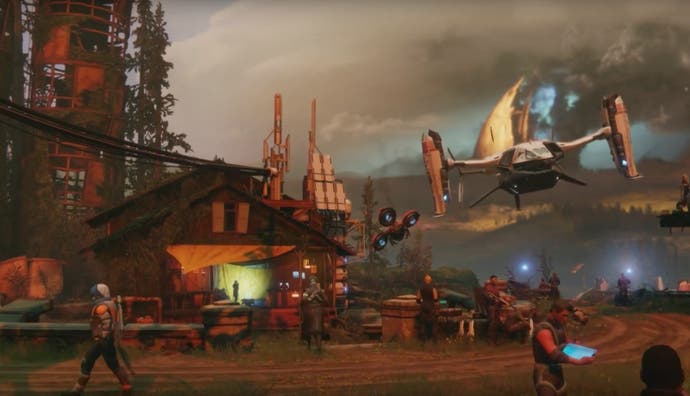
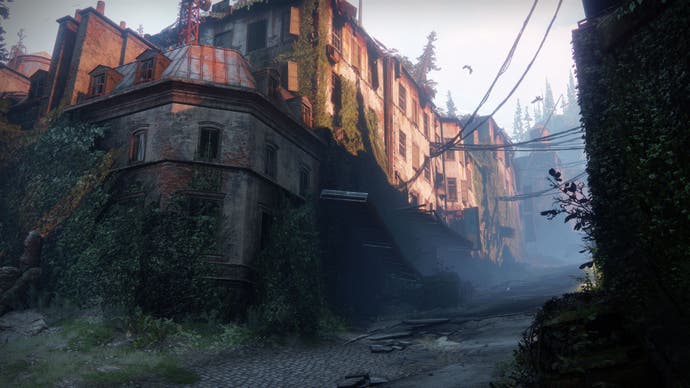
Titan is a moon of Saturn, and where Zavalla is located. It was a human utopia built before the collapse, and is slowly sinking into an ocean of methane.
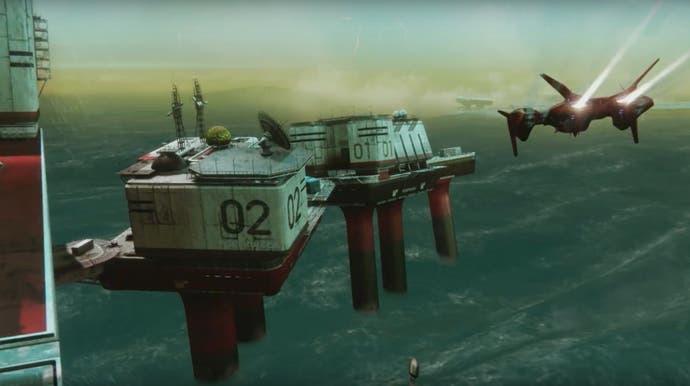
Planetoid Nessus is where Cayde-6 is hiding out. It's occupied by the Vex, who have transformed it into one of their machine worlds, but you can also expect some vast canyons covered in lush native vegetation to play around in, making is sounds similar to Venus from the original game.
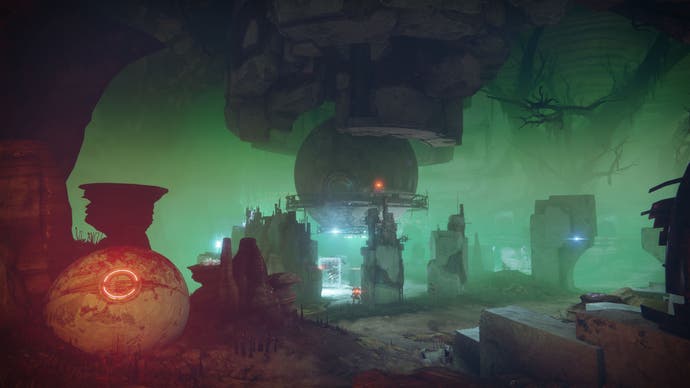
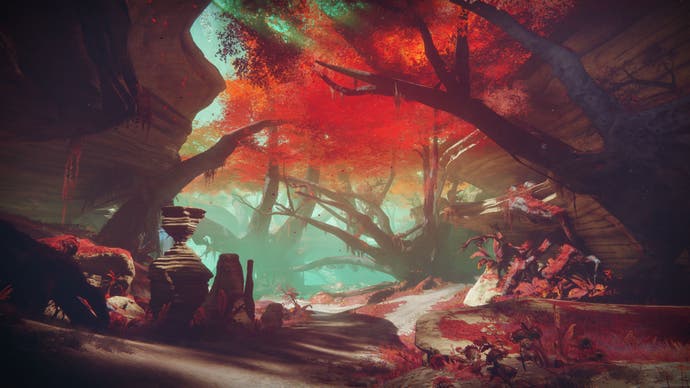
Finally, there's Io, a sulphuric moon of Jupiter, and as one of the last places the Traveller visited before the collapse, is considered a sacred place by the Warlocks - which where we'll find the third and final Vanguard member, Ikora.
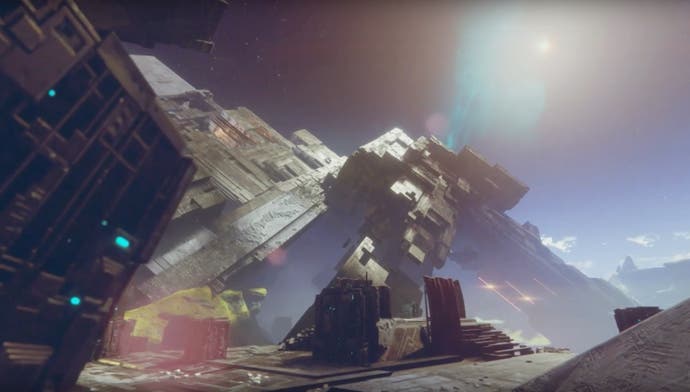
Mapped out larger areas with improved side-quests
The above four areas are bigger than anything seen in the first Destiny, with the promise of much more to do.
As well as the return of Patrols, ambient enemy encounters, public events and region chests to find, there are two new excursions; Adventures, side-missions given to you by characters in the world, and Lost Sectors, which are marked on your map as new places to explore, with a cache of treasure and a boss to fight waiting at the end of it.
To help, you'll now finally have a map to chart your position and progress, and also give you a heads up of the public events and other timed activities that will take place, and when.
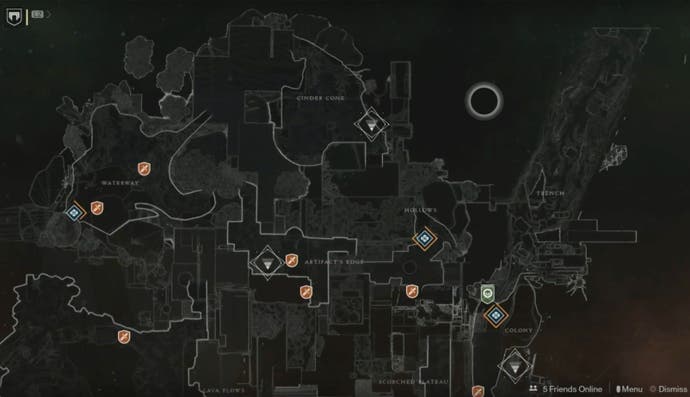
There are also 'Flashpoints', where one location per week will have special attributes (different enemy encounters, treasures) for high level rewards.
No need to go to Orbit
A crowd-pleasing gameplay change that's worth highlighting on its own is the ability to jump from planet-to-planet without going to orbit (the screen where you chose which destinations or activities to play next) first. Bit of a timesaver! Plus, each planet has multiple landing zones - or if you're on the planet already, fast travel points.
New sub-classes with Supers and class abilities
The three primary classes Warlocks, Titans and Hunters all return, but this time with one new sub-class and two reworked returning classes, complete with new Supers (which are assumed to work the same as the first game, gradually building over time and boosted with enemy kills and buffs).
Meanwhile, each sub-class also has a new recharging ability, activated by holding or double tapping the crouch button - this includes erecting a shield, a quick dodge and healing.
If you want to read more about other skill changes, our Destiny 2 classes and sub-classes page dive into these in more detail.
Crucible returns - with some major differences
The Crucible returns in Destiny 2, but it's getting some significant changes.
Redesigned to be more approachable but just as hard to master, all game modes are now four versus four players, with new HUD (display) elements that tell you key information about your opponents, from when they have picked up Power Ammo to when their Supers are ready.
There is one new mode - Countdown - which will be the first attack and defend scenario in the series to date. Fans of the Private Match feature may be disappointed to hear it won't be in the sequel from day one.
Other modes will see tweaks, meanwhile. For example Control will return, also with some surprising changes. Matches will now begin with each team controlling one of three control points from the off, but capturing points no longer requires you to uncapture them from the enemy team, and multiple team members no long speed up capture.
Power Ammo (the replacement for Heavy Ammo) is now found near each team's first spawn point, controlling all zones gives you a bigger point advantage, and matches are now shorter, too.
Clans have been expanded and made more social with Guided Games
While not new to Destiny, Clans are now built into the game itself, making it easier to manage, grow and customise. Being part of a clan will give you shared rewards, even if you only play a few specific missions or matches per week, everyone will benefit in some way.

For those who want to play solo, then Guided Games combines the two concepts. Clans can advertise for additional players to join a Fireteam - completing a team of three or six that wouldn't usually allow matchmaking, such as the Nightfall or Raid - with solo players able to select their desired group based their specific requests.
The solo players can then freely move on after the game, or if they enjoyed their time with the clan, decide to join up. It was noted Guided Games will only be available in Normal and not Heroic difficulty, according to GameSpot.
Destiny 2 is PC exclusive on Battle.net, with support for 4K and more
Destiny 2 on PC (launching after PS4 and Xbox One) will support a range of visual options - from 4K resolution to an uncapped framerate, full mouse and keyboard support, text chat, adjustable field of view and 21:9 monitor support, as well as being exclusive to Blizzard's Battle.net service, the home of World of Warcraft, Overwatch, Hearthstone and more, meaning you won't be able to play through Steam, Origin or other services.
You can read more on Destiny 2 graphics options with our dedicated PC page.
Expansions
There will be two expansions confirmed as part of the limited edition reveal, with symbols hinting at possible returning characters and settings.
One features Osiris - a Warlock who lived on Mercury and whom the high-skilled Trials of Osiris multiplayer event is named after - and the other is of Rasputin, the Warmind intelligence found in the Cosmodrome in the original.
The Season of the Deep is here alongside the Into the Depths quest. You can know go fishing too! Don't forget to keep an eye on the Lost Sector and King's Fall challenge rotation schedule!
PS4 exclusivity
As with the first game, PlayStation 4 owners will receive year-long timed-exclusive content ahead of its Xbox One and PC counterparts, including a competitive multiplayer map, a three-player co-op Strike, a blue and white coloured ship, specialised gear sets and an exclusive exotic weapon.
There are dedicated servers - sort of
An improvement on the original game is there is a combination of dedicated servers and peer-to-peer networking in the sequel. "Every activity in Destiny 2 is hosted by one of our servers," engineering lead Matt Segur explained. "That means you will never again suffer a host migration during your Raid attempt or Trials match. This differs from Destiny 1, where these hosting duties were performed by player consoles and only script and mission logic ran in the data center."
Grimoire cards are no more
Unlocked upon completing new activities or collecting new weapons in the original game, Bungie has confirmed Grimoire cards will no longer be in the sequel.
Why? It's thanks to the its greater focus on in-game storytelling; as well as a form of collectable, these cards also provided additional details about the universe of Destiny when read through the official companion app, so expect these worldbuilding snippets to move into the game instead.
Destiny 2 is out now on PS4 and Xbox One, then October on PC - with pre-orders already available in the UK for the standard edition (on PS4, Xbox One and PC) as well as limited edition (also on PS4, Xbox One and PC).
